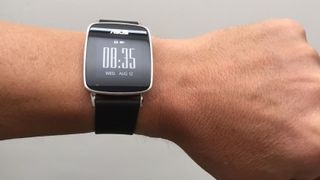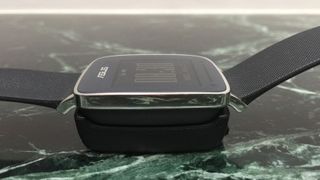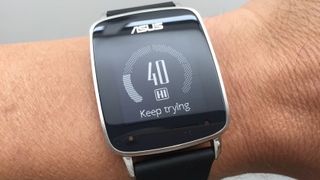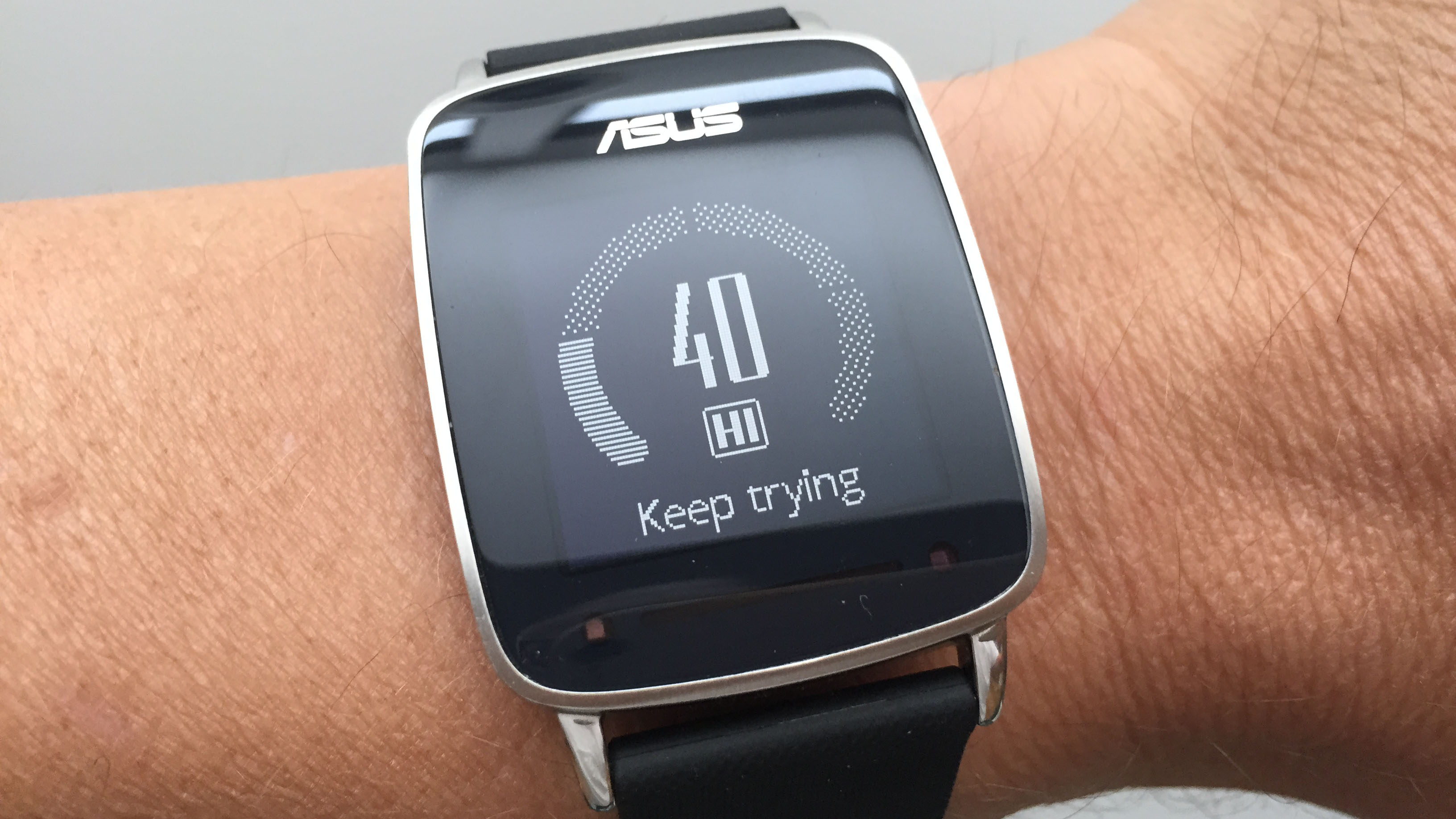TechRadar Verdict
The Asus VivoWatch is fun to use and comes with great battery life but lacks advanced features.
Pros
- +
Easy to read, always on screen
- +
10 days of battery life
- +
Reasonably priced
Cons
- -
Basic companion app
- -
Unnecessary happiness monitor
- -
Doesn't stand out from the crowd
Why you can trust TechRadar
As we know, what people think of as "smartwatches" actually range from what are really pretty basic step counters to deluxe Apple Watches clad in gold. For the record, here's what they really are.
The latest wearable from Asus looks like a watch, but is really more of a fitness tracker… But with a twist.
It's also compatible with iPhones for the first time, because unlike the previous Asus ZenWatch, it doesn't use Google's Android Wear software.
In addition to the usual step and sleep monitoring, with heartbeat tracking like the Fitbit Charge HR and Jawbone UP3, the VivoWatch counts heart beats. However, this also has a USP: it wants to track your happiness and well-being. It doesn't claim to actually make you happy, mind, just measure it.
Is that worth the £100/$150 price of admission? Let's find out, merry chums!
Screen and battery
The VivoWatch has a square screen that is no match for, say, the Apple Watch. This one is low resolution and monochrome. The main screen shows the time and battery life, though the low resolution means the digital displays are clearer than the analogue option. As with other features on the watch, you change faces via the companion smartphone app.
Even better, the time is always on, like, you know, a traditional watch. So you don't need to press a button to wake the display. It's clear and easily visible even in bright sunlight and there's a gentle backlight for night use.

Despite always being on, a considerable advantage of the Asus VivoWatch's relative lack of screen resolution and features is that it lasts up to 10 days between charges. A chunky plastic lozenge clips on to the back for charging, and it handily uses a regular microUSB cable.
Comfort, look and build
The watch's square display sits inside a chrome oblong with rounded corners, which looks classier than the VivoWatch's relatively low price suggests.

The back of the watch is less persuasive, with a textured plastic that feels pretty average. It's dominated by the charging connector and heart rate monitor.
The strap is rubber – this is an IP67 water resistant watch, so the strap needs to be as sporty as you plan to be. You can plonk it in water one metre deep for half an hour, too.
And though it's a conventional watch strap width at 22mm, it's not removable, so there's no swapping it out. The strap is okay, but there are other fitness gadgets that feel much more comfortable.
Happiness monitoring
So far, I'd say I'm reasonably happy with the Asus VivoWatch, but it claims to be able to give a more scientific assessment of my glee. The happiness measurement is the VivoWatch's special attack, you see.
It actually gives you a score from nought to 100. Being at the lower end, you'll be unsurprised to learn, is glum beyond compare while nearing 100 means you're so happy you'll be dancing giddily. That's the theory and it calculates it based on a combination of exercise and sleep quality.
The logic is this: it tracks your activity and sleep, then makes the assumption that if you're well rested and active enough to experience a pleasant endorphin rush, you're likely to be on your way to happiness.
I'm a very uncynical person so this seems fine to me, but some of you may feel that's a pretty surface definition of happiness. If you've just had to flee bandits across miles of inhospitable country, then collapsed and slept for eight hours, you've definitely been active and then rested, but are you happy?
You find your Happiness Index (HI) by unlocking the watch display (done by pressing the side button) and swiping down on the touchscreen.

Your numerical score is accompanied by a description of your state of happiness: under 60 encourages you to beat your score with the words "Keep trying", more than 60 is "Fair" and over 85 is "Excellent".
Let's be grateful it's not more direct – a rating of 40 and the words, "Cheer up, for god's sake" would hardly be inspiring, after all.
There is something pleasing about checking your HI and finding it's going up, but come on – this is a bit gimmicky. If you have to ask a watch how happy you are, it could be said that something's gone wrong, too.
- 1
- 2
Current page: Screen, battery, comfort and happiness monitoring
Next Page Fitness monitoring, app, functionality and verdict
